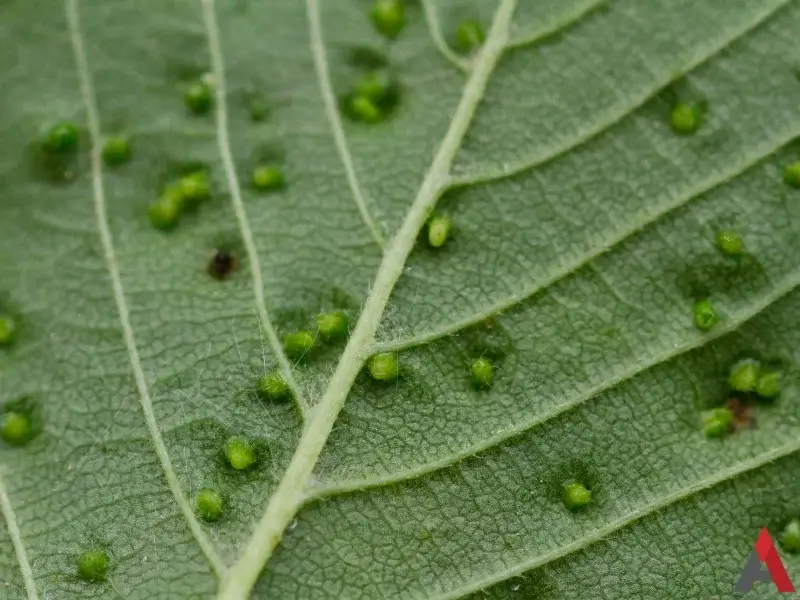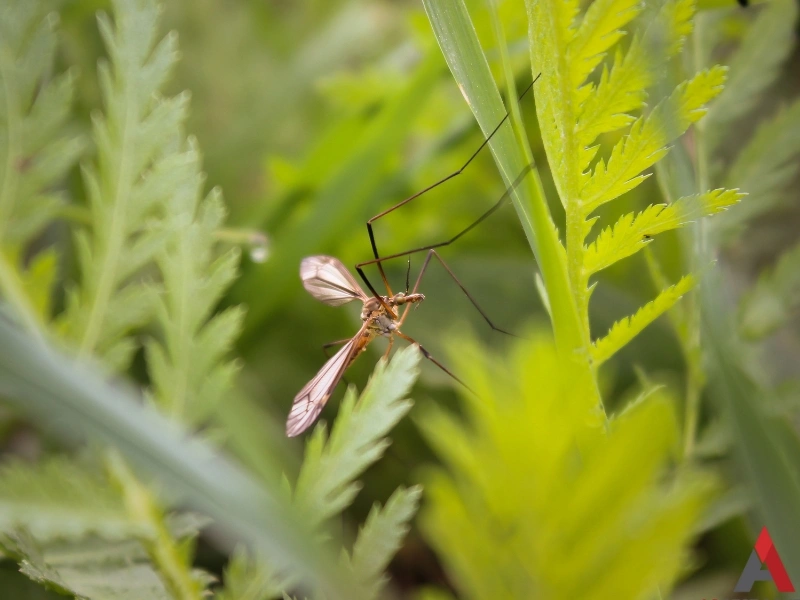
Gall Gnats
Gall Gnats: Identification & Characteristics
Gall gnats are tiny insects that belong to the Cecidomyiidae family. While they might not seem like a big problem at first, their larvae create abnormal plant growths called galls, which can weaken plants over time. These pests are often mistaken for fungus gnats, but they have a different impact—one that affects plants rather than indoor spaces. If you've noticed odd bumps or deformations on your plants, gall gnats may be the culprit.
What Are Gall Gnats?
Gall gnats are small, fragile insects that target plants instead of people or pets. Their larvae burrow into leaves and stems, triggering a reaction in the plant that results in swollen, discolored growths known as galls. While most galls are more of a cosmetic issue than a serious plant health concern, heavy infestations can stunt growth and make plants more vulnerable to disease.

Physical Appearance
- Size: Size: 1–3 mm (smaller than a grain of rice)
- Color: Yellow, orange, red, or brown, depending on the species
- Body Shape: Tiny, delicate, with long legs and see-through wings
- Antennae: Beaded or segmented, making them easy to distinguish from other gnats
Life Cycle & Behavior
Gall gnats undergo a complete metamorphosis, progressing through egg, larva, pupa, and adult stages. The larvae are responsible for causing plant galls, as their feeding stimulates abnormal growths that provide shelter and food.
- Eggs: Laid on host plants, often in leaf tissues or stems
- Larvae: Feed on plant tissues, causing gall formation
- Pupae: Develop within the gall before emerging as adults
- Adults: Short-lived, primarily focused on mating and laying eggs
What Do Gall Gnats Eat?
The larvae of gall gnats are the primary plant feeders, consuming the inner tissue of the galls they induce. Their feeding activity can interfere with plant growth, though in many cases, the damage is cosmetic rather than structurally harmful.Physical Appearance
- Size: Size: 1–3 mm (smaller than a grain of rice)
- Color: Yellow, orange, red, or brown, depending on the species
- Body Shape: Tiny, delicate, with long legs and see-through wings
- Antennae: Beaded or segmented, making them easy to distinguish from other gnats
Life Cycle & Behavior
Gall gnats undergo a complete metamorphosis, progressing through egg, larva, pupa, and adult stages. The larvae are responsible for causing plant galls, as their feeding stimulates abnormal growths that provide shelter and food.
- Eggs: Laid on host plants, often in leaf tissues or stems
- Larvae: Feed on plant tissues, causing gall formation
- Pupae: Develop within the gall before emerging as adults
- Adults: Short-lived, primarily focused on mating and laying eggs
What Do Gall Gnats Eat?
The larvae of gall gnats are the primary plant feeders, consuming the inner tissue of the galls they induce. Their feeding activity can interfere with plant growth, though in many cases, the damage is cosmetic rather than structurally harmful.
Where Are Gall Gnats Found?
Gardens and Wooded Areas
These insects thrive in environments with dense vegetation, especially where a variety of plant species grow in close proximity. Yards with flowering plants, bushes, and trees provide the perfect habitat for gall gnats to lay eggs and feed.
Shrubs, trees, and Ornamental Plants
Many species of gall gnats prefer specific host plants, with different varieties of trees and shrubs experiencing unique types of galls. Maples, oaks, willows, and roses are particularly susceptible.
Agricultural Fields
Crops such as grapes, wheat, and various fruit-bearing plants can be affected by gall gnats, leading to reduced yields and deformities in plant growth. These pests can be particularly troublesome for farmers and commercial growers.
Wetlands
Gall gnats tend to thrive in moist environments, where plant growth is abundant and soil conditions are favorable for larvae to develop.
Urban Areas and Parks
Even in cities and suburban areas, gall gnats can be found in public parks, gardens, and green spaces where ornamental plants and trees provide an ideal habitat.
Are Gall Gnats Harmful?
Gall gnats are generally not dangerous to humans or pets. Their primary impact is on plants, where they can cause:

- Swelling and deformations in leaves, stems, or buds
- Reduced growth in heavily infested plants
- Higher susceptibility to disease in stressed plants
- Aesthetic damage to ornamental plants
- Compromised structural integrity in severe cases: If a plant experiences a high volume of gall formations, it can weaken the branches or stems, leading to breakage.
- Disruptions in nutrient distribution: Gall formations can interfere with a plant’s ability to transport water and nutrients efficiently, leading to wilting and dieback in extreme cases.
Despite their presence, many plants tolerate gall formation without significant health issues, and natural predators often help keep gall gnat populations in check.
How to Identify Gall Galls on Plants
Gall formations caused by gall gnats can appear as:
- Rounded, swollen bumps on leaves or stems
- Small, wart-like growths
- Hollow or spongy areas inside plant tissues
- Unusual discoloration or thickened plant areas
Some galls have a smooth, rounded appearance, while others may be irregular, fuzzy, or textured, depending on the species of gall gnat and the host plant. If left untreated, these galls can persist for an extended period and may eventually affect the plant’s ability to absorb nutrients properly.
How to Get Rid of Gall Gnats
Managing gall gnats takes a combination of plant care and pest control methods. Here’s what you can do:
1. Prune Affected Plant Parts
Trimming off galled areas can help limit the infestation. Be sure to dispose of affected plant material properly to prevent further spread. If possible, prune infected plant material in the late fall or early winter before adult gall gnats emerge in the spring.
2. Attract Natural Predators
3. Avoid Over-Fertilizing
Plants with excessive nitrogen can be more attractive to gall-inducing insects. Using a balanced fertilizer in moderation can reduce the risk of infestation. Excess nitrogen can promote soft plant growth, which is easier for larvae to penetrate.
4. Improve Plant Health
A strong, healthy plant is better equipped to withstand pest pressure. Water appropriately, maintain good soil quality, and prune regularly. Plants that are well-maintained have a better chance of resisting gnat infestations.
5. Use Beneficial Nematodes
Introducing beneficial nematodes (i.e. earthworms) to the soil can help target gall gnat larvae before they develop into adults. These microscopic organisms attack the larvae in the soil, reducing future gnat populations.
6. Consider Insecticidal Soap or Neem Oil
Insecticidal soaps or neem oil can help control gall gnat populations without harming beneficial insects. These treatments should be applied early in the season before the infestation becomes severe.
7. Seek Professional Pest Control
If gall gnats are damaging your garden or landscape plants, professional pest control services can assess the severity of the issue and provide targeted solutions. Experts may use systemic insecticides or other methods to break the lifecycle of gall gnats.
How A-1 Pest Control Can Help
Dealing with gall gnats on your own can be frustrating, especially when they keep coming back season after season. At A-1 Pest Control, we take a proactive approach to protecting your plants by identifying the source of the infestation and recommending the best course of action for long-term control.
- Thorough Inspections: Our team will assess your landscape to determine the extent of the infestation and pinpoint which plants are most affected.
- Targeted Treatment Plans: We develop customized solutions that fit your specific needs, whether you prefer organic treatments, biological control options, or traditional pest management strategies.
- Seasonal Prevention Strategies: We help you take steps to reduce future gall gnat activity by improving plant health, eliminating breeding areas, and using eco-friendly deterrents.
- Expert Guidance: Our technicians provide practical advice on maintaining a healthy landscape and preventing recurring infestations.
With years of experience serving Western NC, A-1 Pest Control is your trusted partner in keeping your plants free from damaging pests like gall gnats.
Frequently Asked Questions About Gall Gnats
Do Gall Gnats Bite Humans?
No, gall gnats do not bite. Their only focus is feeding on plants and laying eggs.
Can Gall Gnats Kill a Plant?
Most plants tolerate gall formation without severe harm, but a large infestation can weaken young or stressed plants. While death is uncommon, the overall health of a plant may decline over time.
Are Gall Galls Permanent?
Some galls remain on plants long after the larvae have left, but many plants shed them naturally as they grow. Pruning can help accelerate this process.
What’s the Best Way to Prevent Gall Gnats?
Keeping plants healthy, avoiding over-fertilization, and removing affected plant parts are the best ways to prevent gall gnats from taking hold. Encouraging natural predators and maintaining garden hygiene also reduce the likelihood of an infestation.
Contact A-1 Pest Control for Gall Gnat Management
If gall gnats are damaging your plants in Western NC, A-1 Pest Control can help. Our pest control experts provide solutions to manage these pests and keep your landscape healthy. Contact us today by calling 828-481-9140 or filling out the form below to schedule a free inspection.

